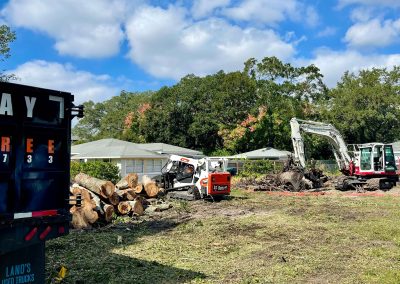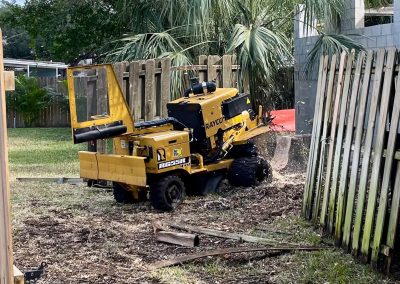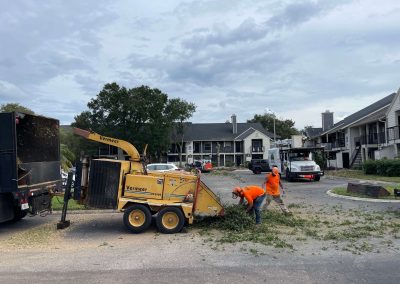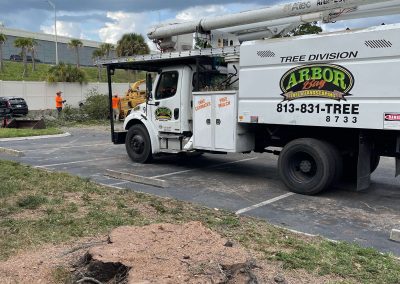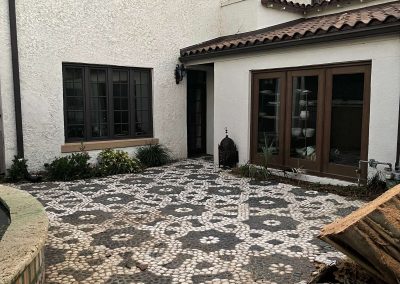Photo Gallery
Tree Service Gallery
Photos of our team in action
Check Out Our Team At Work!
Videos of our team in action
FAQ
Why should I hire an ISA Certified Arborist?
This is an easy one! Regardless of what type of project you have, an ISA Certified Arborist has most likely seen it before.
We have decades of field experience. We take classes on tree physiology, branch dynamics, plant anatomy, soil science, and stay up-to-date with the latest research on tree pruning and plant health care. We're trained to see the big picture with your tree. It's the same reason you go to a Primary Care physician before taking medicine or having surgery. Before any work takes place on your tree, you first need a proper diagnosis of the problem. Once the problem is determined, we can help write specifications to abate the concern, and send a team of highly-trained professionals to execute the plan.
At Arbor Bay, Inc. we have ISA Certified Arborists on staff to give you a free estimate. And for tricky situations, we're one of the few companies in Florida with an ISA Board Certified Master Arborist on staff (FL-6763B). The health of your trees and the safety of your property is extremely important. Don't settle for less.
"Healthy trees make a happy neighborhood."
Are you fully licensed and insured?
Yes we are. But this is a bit more complicated question than you think! There is no "license" required in the state of Florida. "Licensed" in general means only that a tree service has a tax receipt from the county allowing them to operate a business. No training or experience is required to obtain this "license". And "insured" does not always mean the company has Worker's Comp for your type of project.
At Arbor Bay, Inc. we have certification through the International Society of Arboriculture (ISA). All of our sales representatives are ISA Certified Arborists. All of our workers are full-time professionals. Further, we carry 1-million per incident General Liability insurance, and Worker's Comp Class Code 0106 covering every employee, which allows for tree work at any height and use of heavy equipment while working. This is the only class code that covers tree removal (and some larger pruning jobs).
You can check for Worker's Comp at https://dwcdataportal.fldfs.com/ProofOfCoverage.aspx and you can check arborist certificates at https://www.treesaregood.org/findanarborist/findanarborist.
What happens if I use a company without proper insurance?
There is a chance that things go smoothly and the project is completed according to your satisfaction. But any problems with the project such as damages to your property, injury to a worker, or municipal permitting issues would be your responsibility. In the event that something really bad goes wrong, it could lead to you and/or your homeowner's insurance getting sued in civil court, even if it wasn't your fault.
At Arbor Bay, Inc. we take the safety of our client's property and the well-being of our workers very seriously. If anything goes wrong on one of our projects, you are free of any liability. We have the right insurance to cover damages to your property, and the appropriate worker's compensation to make sure our team members receive the medical care they deserve. Further, because we foster an environment of safety and responsibility, we have very few accidents occur on our jobsites. Why take the risk?
Should I have my trees pruned regularly?
Short answer: yes.
Think of routine pruning like any human healthcare function. You brush your teeth to avoid cavities. You exercise and eat healthily to help prevent heart disease. And if you're planning to run a marathon, you spend months/years training for it. Florida is a storm state. Storms are your tree's marathon. If your tree has not been trained for a storm, then it's not going to be prepared no matter what you do last minute. In fact, pruning right before a storm is often times the worst thing you can do.
Proper routine pruning focuses on improving overall tree architecture and reducing risk to your property, without excessive or unnecessary cuts. At Arbor Bay, Inc. we're trained to solve the problem in as few cuts as possible, so your tree still looks like a tree with all the benefits of a tree, and you're not over-paying to have branches cut for no reason. We have an ISA Tree Risk Assessment Qualification (TRAQ) arborist to help determine risks. We have a Prescription Pruning Qualification (PPQ) arborist to write appropriate pruning specifications to mitigate the risk concerns. And every person on our team is trained weekly by our ISA Board Certified Master Arborist on proper pruning, rigging, and working techniques.
Call today to set up a free estimate with an ISA Certified Arborist. We can discuss proper pruning, pruning intervals, and the right time of year for your species of tree.
How often should I have my trees pruned?
This is a tough question to answer without first seeing your tree, but on average we like to put native hardwoods on a (2 to 3)- year pruning interval, and palm trees on a (1)- year interval. If you have a newly-planted hardwood, we recommend yearly pruning for the first three years to promote proper structure.
Learn more about mature hardwood pruning here: https://hort.ifas.ufl.edu/woody/preventive-pruning.shtml.
What else should I be doing for my trees?
Great question! I spend a lot of time trying to keep trees alive for developers during construction, and I've learned quite a bit the hard way in doing so. A basic model I use for tree preservation during development also applies to urban trees on existing residential properties. We say that tree preservation is a sink or swim practice, and we want you to SWIM! You can apply this model to your tree(s).
S - Space. Give the tree plenty of space. Try to keep lawnmowers, foot traffic, etc. as far from the tree as practical as you can without losing yard function. Soil compaction is near the top of the list for cultural problems causing tree decline. And if you're a developer, keep construction equipment out of the PRZ.


